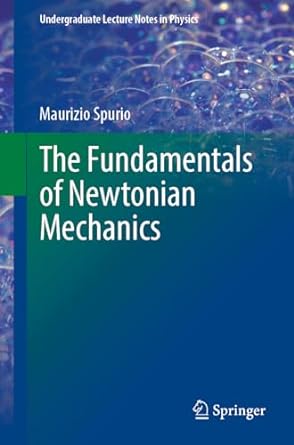A body of mass (m) gravitationally attracted to a much larger body of mass (M) describes an
Question:
A body of mass \(m\) gravitationally attracted to a much larger body of mass \(M\) describes an elliptical trajectory if the total mechanical energy \(E_{T}\) is strictly negative, while it has a trajectory corresponding to a hyperbola branch if \(E_{T}>0\). An artificial satellite of mass \(m=2.00 \times 10^{3} \mathrm{~kg}\), considered point-like, moves around the Earth \(\left(M_{T}=5.97 \times 10^{24} \mathrm{~kg}\right)\) on an elliptical orbit, with perigee value \(d_{p}=1.10 \times 10^{6} \mathrm{~m}\) and apogee value \(d_{a}=4.10 \times 10^{6} \mathrm{~m}\) (both calculated with respect to the Earth's surface, whose radius is \(R_{T}=6370 \mathrm{~km}\) ). The speed the satellite has at perigee is \(v_{p}=7.90 \mathrm{~km} / \mathrm{s}\). Recall that \(G=6.67 \times 10^{-11} \mathrm{~N} \mathrm{~m}^{2} / \mathrm{kg}^{2}\).
1. Verify that the data given actually contemplate an elliptical orbit.
2. Determine the velocity of the satellite at apogee.
3. Knowing that the eccentricity of the orbit is \(e=1 / 6\), determine the equation of the satellite's trajectory with respect to a Cartesian reference system that has the axis of symmetry along the line joining perigee with apogee and origin in the center of symmetry of the trajectory.
4. Prove, with the position and velocity at perigee given in the text, that the eccentricity of the orbit is \(1 / 6\).
Step by Step Answer:






